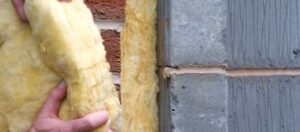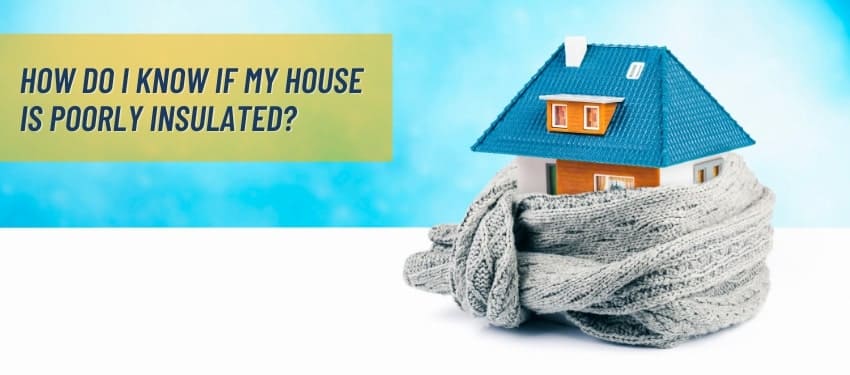With the cold season in, Same Day Pros has received tons of inquiries regarding heating and even tips on how to reduce fast snowballing utility bills. One of the questions that we usually ask to address these queries is— “is your house insulated?”, mostly the answer is “yes” or “I think so”, then our next question will be “how can you tell if your house is well insulated?”, most often than not, we will receive a long pause as homeowners will actually think about it.
We garnered from these responses that many homeowners, especially those who live in older houses, are not sure about the state of their home’s insulation. So how could you tell if your house is well insulated? Knowing the answer to this question is a must because it could even be the reason why your power bill is higher than it should be and why you are not actually able to fully utilize the heating capacity of your devices.

Take note that insulation is not only for the cool weather, but it is also equally beneficial to have good insulation during the hot days (or basically the whole year-round). In addition, as a wise homeowner, it is also best that all the mechanisms in your house are well-maintained and running smoothly. This is to avoid any issue from turning into any major home repairs, which will surely lead to a high repair cost.
So back to the question, how could you tell that your house is well insulated or not? Here are quick questions or “tests” that you can do. Afterward, read through to more detailed information regarding signs of poor insulation.
- Is your house still chilly despite having the heater on or there is a running furnace?
- Are some areas of your house feel too cold despite having a working HVAC system? Or do you feel discomfort especially during those extra hot or cool days in some rooms?
- If you do a quick touch test now on your walls, floors, and interior ceilings, (as the name sounds, it is literally running your hands or touching different parts of your home), do they feel cold and wet? Note that the cool weather is the perfect time to do this.
If your answer is YES to the three questions, then most likely you have poor insulation at your house.
To follow up, here are more questions that you can quickly explore to pinpoint if your house is well insulated:
- How sure are you that you actually have insulation in your walls? You might not realize this, but it is not always an easy answer if you have a well-insulated wall unless you remodeled the house yourself, or if it’s fairly new. For walls, some may suggest the “knock on your walls” test, if your wall does not have installation, it will sound hollow. But for the untrained ears, this is not a reliable method. One needs to properly inspect the wall cavities (e.g., removing the drywall, checking behind the baseboards, etc.) to verify that your walls have insulation.
- Does your attic have insulation? This is easier to check than your walls. What you need is just a ladder and once you find the attic access panel, just look through. Simply check the spaces between the joints by prying up a floorboard, if they are filled with insulation, then this is good news for you.
- Do you know if you have good weatherstripping in place or are your windows and doors have been effectively caulked? If not, then there is a big chance that you may have issues in these areas.

Signs that your house is poorly insulated:

- High energy bills
It is true that energy cost is consistently rising each year, so it is a good practice to monitor your bills. Significant increases and spikes, especially those hard to explain ones, in your bills are indicators that your house’s heating or cooling capacity is not on an efficient run. You may also have insulation in place, but as years passed by, the usual wear and tear will take its place. It will be a gradual change, and you may not notice it, but your energy bill (if monitored) will surely show this.
You can also do a quick search and compare average expenditures on similar size homes if you are using more gas to heat your home.
If your house is not properly insulated, it will take a lot of power to control your home temperature. Your heating or cooling appliances will work extra harder if your insulation is not in order. More energy usage means higher electric bills.
Additional saving tip: In addition to monitoring your utilities and investing in good insulation, make sure that your HVAC unit is well-maintained. Make to regularly schedule for an HVAC system maintenance from a qualified company and save more from having a heater in optimum shape.
- Drafts
You may have learned this in one of your Science classes but air always moves to fill in or occupy space. Applying this on insulation, if warm air is exiting your house, it means that cold air will move to fill in the gap. So if you are experiencing drafts, even with all doors and windows being closed, then it means that your insulation problem
Fix Tip: Seal all the exits and prevent warm air from escaping. Weatherstripping, window replacement with higher R-values (won’t allow hot air to easily escape) and door replacement (consider having a storm door as they keep outside air out) are good ways to solve issues with drafts. If you do not have enough budget, a cheaper alternative (not as a permanent solution) will be using thick curtains and adhesive clear plastic for windows.
- Inconsistent or fluctuating household temperature
Having inconsistent or varying temperatures is a big sign that your house has poor insulation. If you are feeling cozy warm in your room, but freezing in the dining area, it could mean that the warm area has better and intact insulation than the other area that easily lets heat slip away.
Tip: Before outright assuming that the cold area has insulation issues, make sure to check first that the warm air is getting in the room. Check that the vents are open and the filters well maintained.
- Water leaks
Did you know that good insulation not only keeps the heat in but also keeps the water and moisture out? So if you find any signs of leakage during rains, then it is a clear sign that you have an insulation issue.
Beware of molds: If moisture or water is coming, mold could follow, as it is the perfect breeding ground. This is dangerous to your health and should be dealt with as soon as you spot them. Aside from insulation issues, problems with your pipes could be the culprit. Make sure to call in the professionals to address the issue right away.
- Problem with pests (bugs, rodents, pigeons)
Insulation is not only for temperature control; it also keeps pests out. If you spot any mice droppings or even see them running around the house, then they have a point of entry. Poor or old insulation could also be the home base for infestations. If there is also a lot of pigeon on your roof as compared to your neighbors, then an insulation issue could be at hand. Pigeons may have an access point through to your attic and love the warmth provided by your roof and safety from predators.
Tip: If your roof is over 20 years old, have them replaced. This will also ensure that your heating is not lost through your roof. Find a qualified roofer here.
- Frozen pipes
If you live in an area with extreme temperatures or harsh winters, those dropping temperatures can make your pipes freeze. If your pipes are freezing regularly, then poor insulation could be an issue and should be addressed immediately. Good insulation will protect your pipes, ensuring that will work normally and save you from costly pipe repairs and replacement.
Tip: For lower energy bills, consider insulating your pipes. This helps in minimizing heat loss and allows you to set your water tank at a lower temperature, thus helping you conserve more energy.
- Your interior walls are freezing or cold to touch
As mentioned on the touch test, a cold wall is an indicator of poor house insulation. This could mean that the heat from your furnace doesn’t last long enough to keep your walls comfortably warm. This also means that your heating system is working overtime to keep the temperature up in your home.
Tip: We recommend that you let the pros handle this especially since you will need to take out some bricks to confirm that there are air spaces in your wall insulation, they will also be able to determine the best materials to use to redo your installation.
As you may have observed, there are many tell-tale signs that could indicate a poor insulation issue. Some are apparent, while others are hard to spot especially if you are not aware. An example of this is one may not connect their pest or mold issue with insulation. For an easier and shorter route, call in an insulation pro. Not only do they have the right equipment, but they are well-trained to inspect your ceilings, walls, floors, attics, and even your windows and doors.
Improving your home’s insulation is not only to improve the comfort of your home, but it also has a good return of investment, as it will surely reduce your energy consumption and save you from other costly home repairs. In addition, ensuring that your home has good insulation is further safeguarding your family from various health issues brought about by poor insulation issues.


